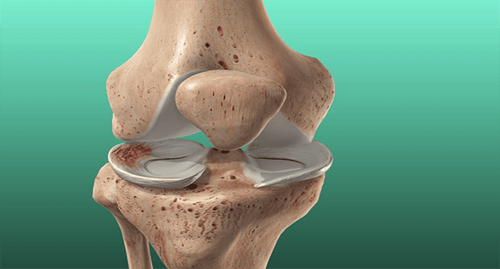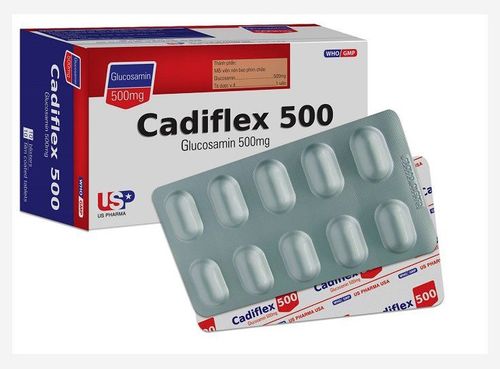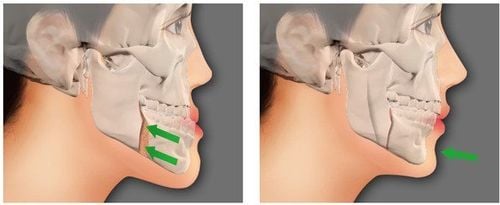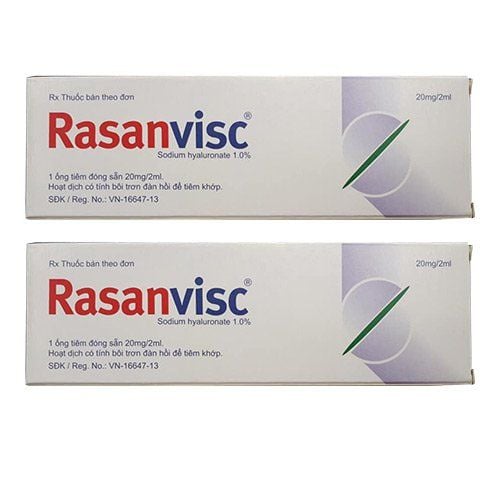This is an automatically translated article.
One of the most common knee problems is a meniscus tear. A meniscus tear can lead to severe pain in the knee, making it impossible for a person to move the knee normally or having persistent knee pain later in life.
1. Can a torn meniscus heal on its own?
The meniscus are two tough, rubbery C-shaped pieces of cartilage that help absorb shocks in the knee joint. This is an extremely useful little cushion for the knee, the largest joint in the body, bearing more than one and a half times your body weight with each step. It's no surprise that meniscus injuries can be painful and, if left untreated, can sometimes lead to more serious problems.
In fact, meniscus tears can heal on their own if they are minor tears. At the same time, the self-healing ability of the meniscus depends on where the tear is located.
Anatomically, the meniscus is a C-shaped meniscus that is divided into 3 regions, and the location of the tear in these regions determines the healing ability of a tear. The outer third of the meniscus has plenty of blood supply, which is most likely to heal on its own if torn here. Middle third of meniscus with minimal blood supply. When torn, the meniscus may heal on its own but may depend on the type/shape of the tear.
The innermost third of the meniscus has no direct blood supply. Healing a meniscus tear is nearly impossible. So basically, the deeper a meniscus tear goes into these areas, the less likely it is to heal.

Rách sụn chêm gối có thể ảnh hưởng rất nhiều đến chức năng đi lại về lâu dài
2. How long does a meniscus tear heal without surgery?
In general, a meniscus tear takes 6-12 weeks to heal. Some even heal faster after just 4 weeks, depending on the size of the tear and its location.
Along with surgery or conservative options, the doctor or physiotherapist will ask the patient to perform exercises and stretches to help quickly return to his or her daily activities. safely and quickly, and at the same time help patients improve the consequences of meniscus tear as well as reduce the risk of re-injury later.
Specifically, once a meniscus tear has been diagnosed, outpatient physical therapy is often the first approach. If the doctor determines that the tear does not require surgical intervention, the patient may need to have joint conservative treatment for about 4 to 6 weeks. For the best results from knee rehabilitation physical therapy exercises, it is important to fully participate, performing exercises at home as prescribed. It may take up to 8 weeks or more for a meniscus tear to heal before returning to normal activities.

Vết rách sụn chêm gối mất 6-12 tuần để lành lại
3. Consequences of meniscus tear if not treated
There are different types of meniscus tears and they can have different causes. Some meniscus injuries are the result of a sudden trauma while some tears occur due to weakened cartilage or degeneration of the knee joint. Usually, meniscus tears occur during everyday activities, especially during sports, during movements that involve squatting or twisting, or from direct impact.
At first, walking on a meniscus tear was still doable and could cause many people to skip the doctor's visit. However, over the next few days, the knee may get worse, becoming stiff, swollen, and painful. Other signs of a meniscus tear include a feeling that the knee is "locked up," deformed, or has limited range of motion.
Because the knee is a complex joint with many different parts, any untreated knee injury can lead to other problems. On the other hand, one of the important reasons to consult a doctor about a suspected meniscal tear is that it can often occur with an anterior cruciate ligament tear or general knee injuries.
If treatment is not sought for a meniscus tear, the injury can cause knee problems later in life. Part of the torn meniscus can rupture on its own and lodge in the knee joint, sometimes causing severe joint pain that affects the knee's mobility. The patient's quality of life will be impeded, and the pain will not be limited to sports and exercise, but may limit other essential activities, such as walking or taking the stairs. . At this point, the knee joint will require an invasive surgery for reconstruction rather than repair or treatment of the initial minimal meniscus tear. In addition, untreated torn meniscus can also stimulate the early development of osteoarthritis in the knee, causing knee osteoarthritis and consequent disability.
Although this may be a seemingly simple knee injury, if not properly maintained, the resulting meniscal tear can greatly affect walking function in the long run. In patients with untreated meniscal tears, the tear will grow larger and fibrous, causing knee osteoarthritis is very common. In patients with partial meniscus surgery, stiffness is also a concern. Therefore, if there is any knee injury, the patient should see a doctor and discuss their treatment options, to avoid the unfortunate consequences of a meniscus tear later on.
Currently, Vinmec International General Hospital has successfully treated many musculoskeletal diseases such as meniscus tears, osteoarthritis, elbow fusion, fracture... With modern technical facilities ; a civilized, polite, safe and sterile medical examination and treatment space with a team of highly qualified and well-trained doctors at major Orthopedic and Trauma Centers at home and abroad... You can rest assured when choosing Vinmec to perform surgery and treat bone and joint injuries. Thanks to good medical quality, the examination and treatment always achieve good results, helping patients recover quickly.
Please dial HOTLINE for more information or register for an appointment HERE. Download MyVinmec app to make appointments faster and to manage your bookings easily.













